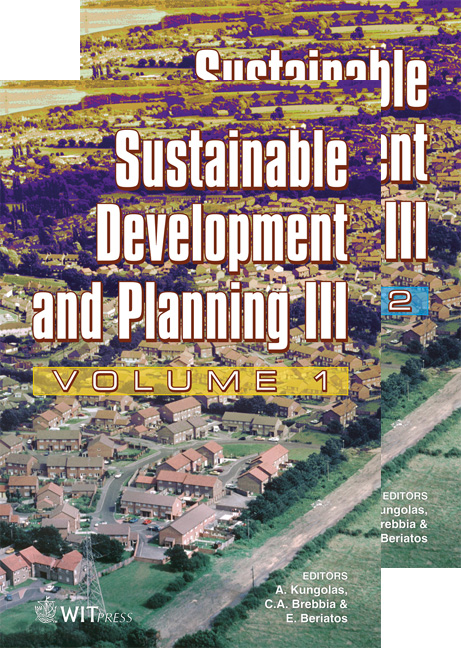Evaluating Conflict Zones Of Air Pollution In A Mid-sized City
Price
Free (open access)
Transaction
Volume
102
Pages
10
Published
2007
Size
2,144 kb
Paper DOI
10.2495/SDP070451
Copyright
WIT Press
Author(s)
J. F. G. Mendes & L. T. Silva
Abstract
The urban argument currently assumes an extreme level of relevance for governments and the society in general, due to the exponential increase of people living in cities and the consequent associated degradation of quality of life. Growth is continuously applying pressures over resources, infrastructures and facilities, affecting negatively the standard of living in cities. In this context, evaluating and monitoring the urban environmental quality has become a main issue, particularly important when considered as a decision-support tool that contributes to more liveable and sustainable cities. Viana do Castelo is a mid-sized city located on the northwest seaside, which undertook the challenge of developing an environmental program leading to the integration in a Healthy Cities European Network. The identification of urban air quality levels and people exposure was considered a priority in this program. The scientific toolbox adopted to develop the studies includes air quality simulation models and a GIS platform. Based on traffic and site physical characteristics, air pollution maps were created and overlaid together with the land-use and population distribution layers. This combination was the basis for the identification of critical zones, both in terms of air quality levels and people exposure to this kind of pollution. Furthermore, the results were used to sort out mitigation measures and priorities, particularly important in a context of limited resources. This paper aims to present the approach, including the theoretical framework, and to discuss the results and their role within the city’s quality of life argument. Keywords: urban air pollution, air pollution modelling.
Keywords
urban air pollution, air pollution modelling.





